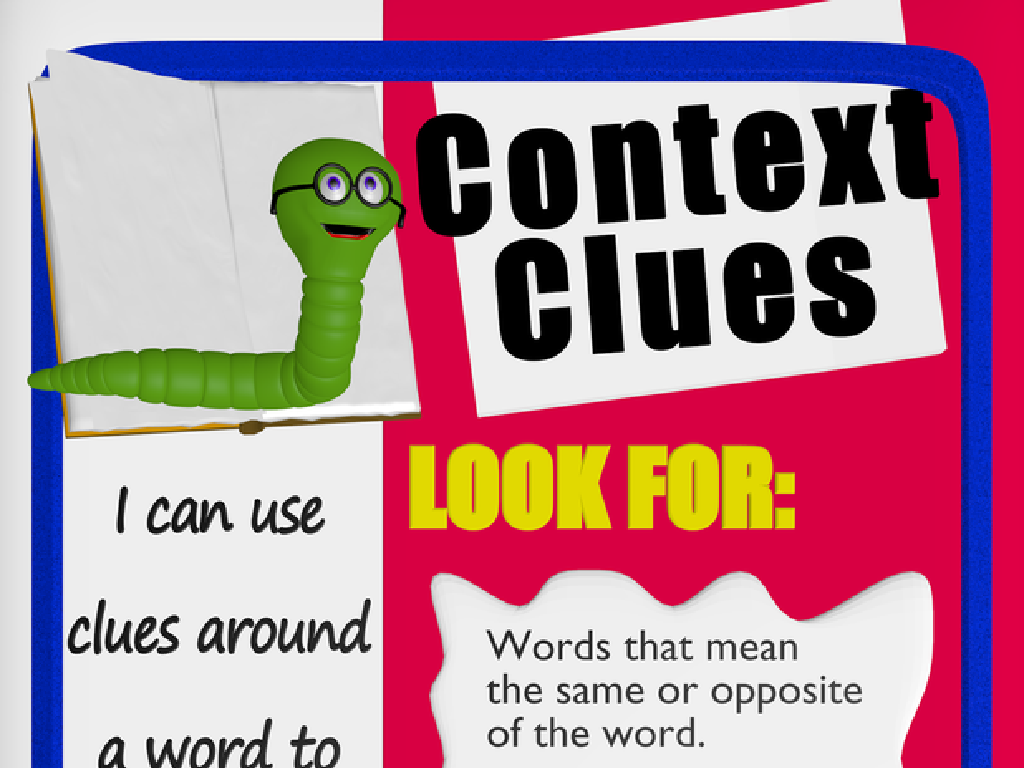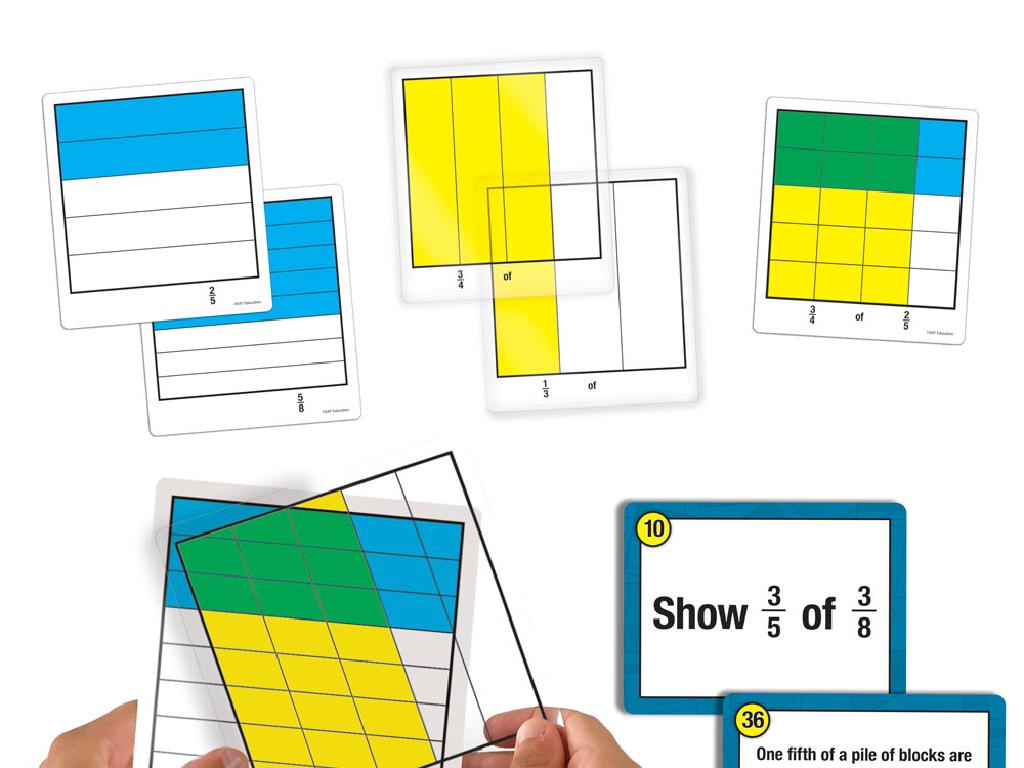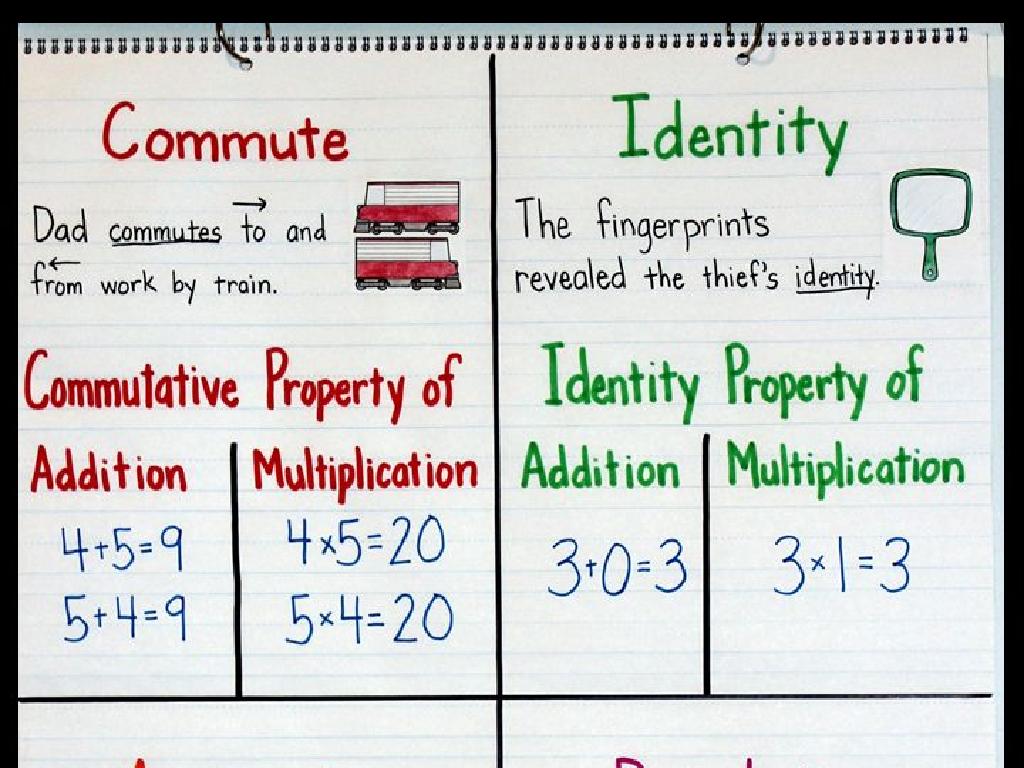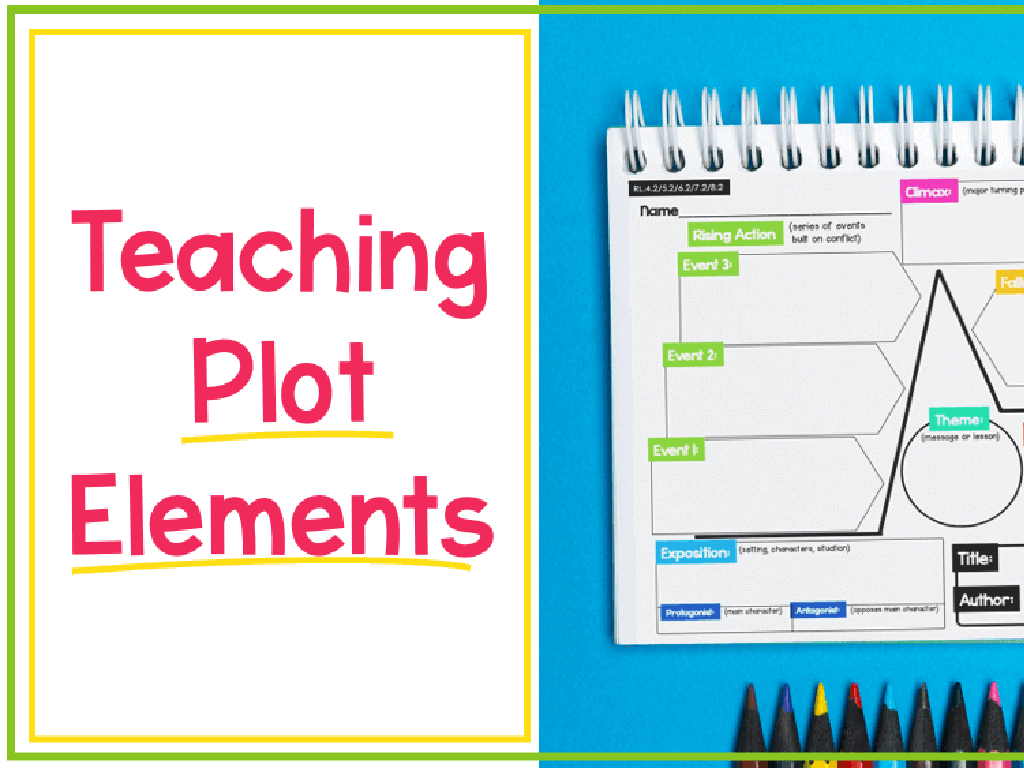Body Parts And Their Functions
Subject: Science
Grade: Second grade
Topic: Animals
Please LOG IN to download the presentation. Access is available to registered users only.
View More Content
Welcome to Our Body!
– Greeting with a smile
– Today’s topic: Body Parts & Functions
– Body parts help us live and play
– Our legs help us run, our hands help us hold things
– Comparing to animal body parts
– Animals have paws for running, wings for flying
|
Begin the class with a warm greeting to create a welcoming atmosphere. Introduce the topic of body parts and their functions, emphasizing the importance of each part in our daily activities such as living, playing, and learning. Draw parallels between human body parts and those of animals to help students relate and understand the concept better. For example, discuss how our legs allow us to run just like animal paws, or how our arms help us lift and carry things, similar to how monkeys use their limbs. This comparison will make the lesson more engaging and memorable for the students.
Exploring Animal Body Parts
– Definition of body parts
– Parts that make up an animal’s body
– Examples: head, arms, legs
– Like our head for thinking, arms for grabbing
– Class activity: Identify your parts
– Touch your head, arms, and legs
– Understanding body part functions
|
Begin the lesson by explaining that body parts are the different sections of an animal’s body, including humans. Provide clear examples such as the head, which is used for thinking and sensing, arms for grabbing or holding, and legs for walking or running. Engage the students in a simple activity where they touch their own head, arms, and legs to connect the concept with real-life experience. This will help them understand that body parts have specific functions. Encourage the students to think about what they use each body part for and to consider how animals might use similar parts differently.
Exploring Animal Heads and Their Parts
– Eyes for seeing
– Animals use their eyes to see and avoid danger.
– Ears for hearing
– Ears help animals hear sounds to communicate and protect themselves.
– Mouth for tasting
– With their mouths, animals taste their food.
– Nose for smelling
– The nose is used to smell food and sense danger.
|
This slide introduces the students to the different parts of the head and their functions in animals. Start by discussing the eyes and how they help animals see the world around them. Move on to the ears and explain how hearing helps animals detect predators or prey. Discuss the mouth and how the sense of taste helps animals enjoy their food and avoid harmful substances. Lastly, talk about the nose and its role in smelling, which is crucial for finding food and sensing danger. Engage the students with the interactive question to ensure they understand the material and can apply it to their own experiences. Encourage them to think about how these senses work in their own bodies and in the animals they observe.
The Torso: Central Part of the Body
– The torso is the body’s central part
– The chest helps us breathe
– When we inhale, our chest expands
– The stomach helps digest food
– It breaks down food so our body can use it
– Activity: Feeling the chest move
– Take a deep breath in and out to feel it
|
The torso is an essential part of the body that houses many vital organs. Discuss the importance of the torso in providing structure and protection for these organs. Explain how the chest is responsible for breathing by expanding and contracting to inhale and exhale air. Highlight the stomach’s role in digestion, breaking down food into nutrients the body can absorb. For the activity, guide students to place their hands on their chest and take deep breaths to feel the movement of their chest. This will help them understand the function of the chest and lungs in breathing. Encourage them to share their experiences and ensure they understand the connection between the physical sensation and the function of these body parts.
Limbs: Arms and Legs
– Arms and legs help us move
– We use arms for holding things
– Legs are for walking and running
– Animals use limbs in unique ways
– Birds use wings (arms) to fly, horses use legs to gallop
|
This slide introduces the functions of limbs in both humans and animals. Arms and legs are essential for movement such as walking, running, and holding objects. Discuss how different animals use their limbs for various activities, like birds using wings to fly or horses using their legs to gallop. Engage the class with a ‘Simon Says’ game focusing on limb movements to reinforce the lesson and provide a fun, interactive way to learn about the importance of limbs. For the activity, prepare a series of commands that involve using arms and legs, such as ‘Simon says, flap your arms like a bird’ or ‘Simon says, gallop like a horse’. This will help students physically understand the function of limbs.
Exploring Our Senses
– Learn the five senses
– Sight, hearing, taste, touch, smell
– Which body parts we use
– Eyes, ears, tongue, skin, nose
– Match senses to body parts
– Eyes see, Ears hear, Tongue tastes, Skin feels, Nose smells
– Play a ‘Guess the Object’ game
– Use senses to identify hidden items
|
This slide introduces the concept of the five senses as a fundamental part of understanding how animals, including humans, interact with their environment. Each sense is connected to a specific body part: eyes for sight, ears for hearing, tongue for taste, skin for touch, and nose for smell. Engage the students with a simple game where they use their senses to guess objects hidden from view, such as guessing a fruit by its smell or a musical instrument by its sound. This activity will help solidify their understanding of the senses and their associated body parts. Make sure to have a variety of objects available for the game, and guide the students through using each sense to make their guesses.
Animal Body Parts and Their Functions
– Comparing human and animal parts
– Special parts for survival
– Different animals have unique body parts that help them live in their environments
– Elephant’s trunk uses
– An elephant’s trunk is used for breathing, smelling, and grabbing things
– Exploring gills and wings
– Fish breathe underwater with gills, and birds fly with their wings
|
In this slide, we aim to teach students how animal body parts can be similar to human body parts, but also have special adaptations that help them survive in their environments. Start by comparing familiar human body parts with those of animals, highlighting both similarities and differences. Discuss how certain animals have developed unique body parts, like the elephant’s trunk, which serves multiple purposes including breathing and grasping objects. Explain how fish gills are specialized for extracting oxygen from water, allowing them to breathe underwater. Lastly, talk about how birds have wings that are adapted for flight. Encourage students to think of other animals and their unique body parts, fostering a discussion on adaptation and survival.
Class Activity: Body Part Charades
– Learn the rules of charades
– Act out body parts or functions
– Pretend to be an animal and show how you use a body part
– Guess the body part or function
– What body part is your classmate showing? How is it used?
– Have fun while learning
|
This activity is designed to help students learn about body parts and their functions in a fun and interactive way. Begin by explaining the rules of charades: no talking, use body movements to act out. Students will take turns coming to the front of the class to act out a body part or its function without using words. The rest of the class will guess what is being acted out. This encourages students to think creatively about how body parts are used by animals, including humans. Possible variations of the activity could include acting out how different animals use their body parts, such as how a fish swims with fins or how a kangaroo hops with its strong legs. This will help reinforce the lesson in a memorable way.
Review and Goodbye: Animal Body Wonders
– Recap: Animal body parts & functions
– Share one new fact you learned
– Did you learn how fins help fish swim?
– Thank you for being great learners!
– Keep exploring the animal kingdom!
– Maybe you can visit a zoo or watch a nature documentary!
|
This slide is meant to wrap up the lesson on animal body parts and their functions. Start by quickly going over the main points covered in the lesson to reinforce learning. Then, engage the students by asking them to share one thing they learned; this not only helps with retention but also allows you to assess their understanding. Show appreciation for their attention and participation throughout the lesson. Finally, encourage their natural curiosity by suggesting ways they can continue learning about animals, such as visiting a zoo or watching educational shows. This will help foster a love for science and exploration.






